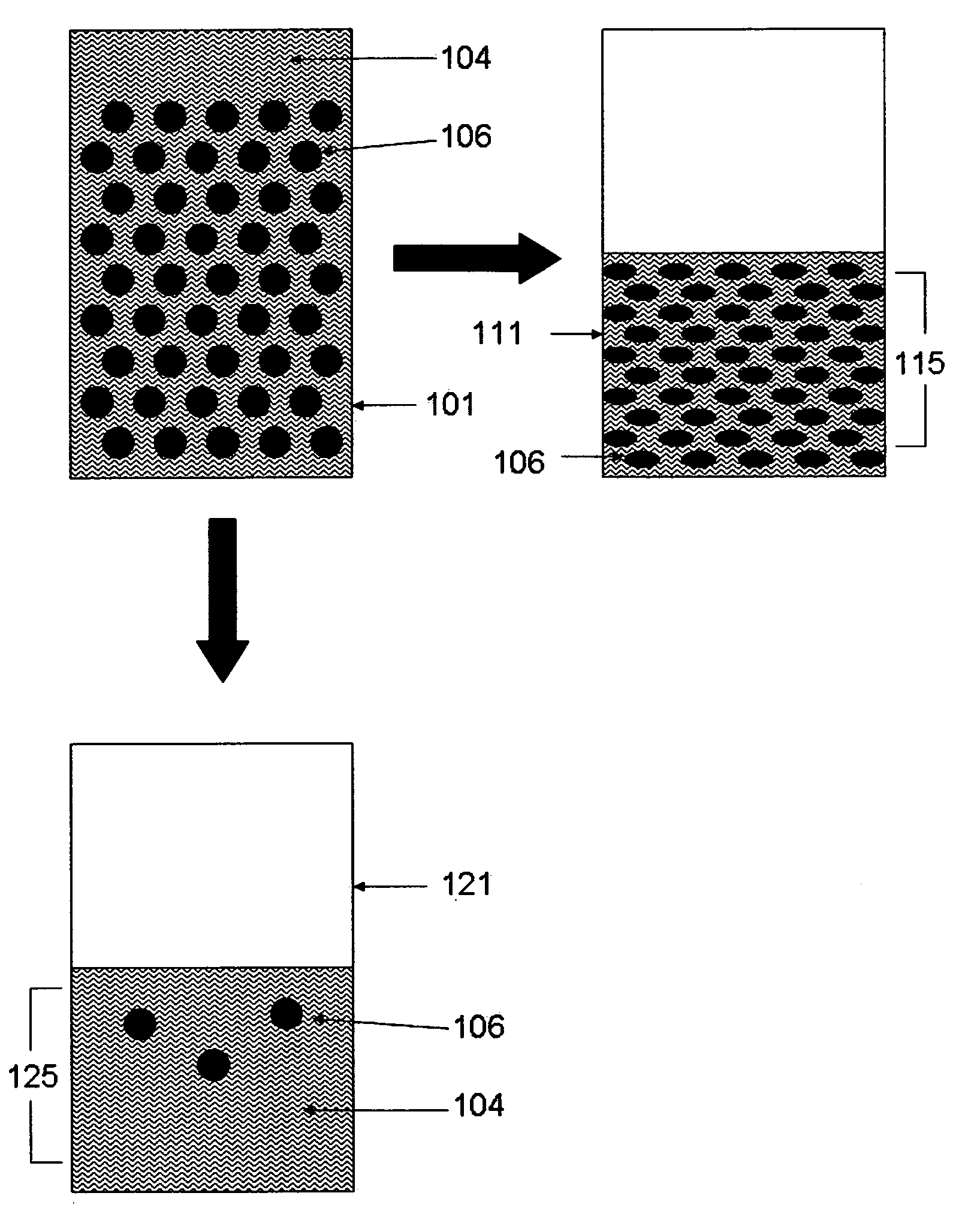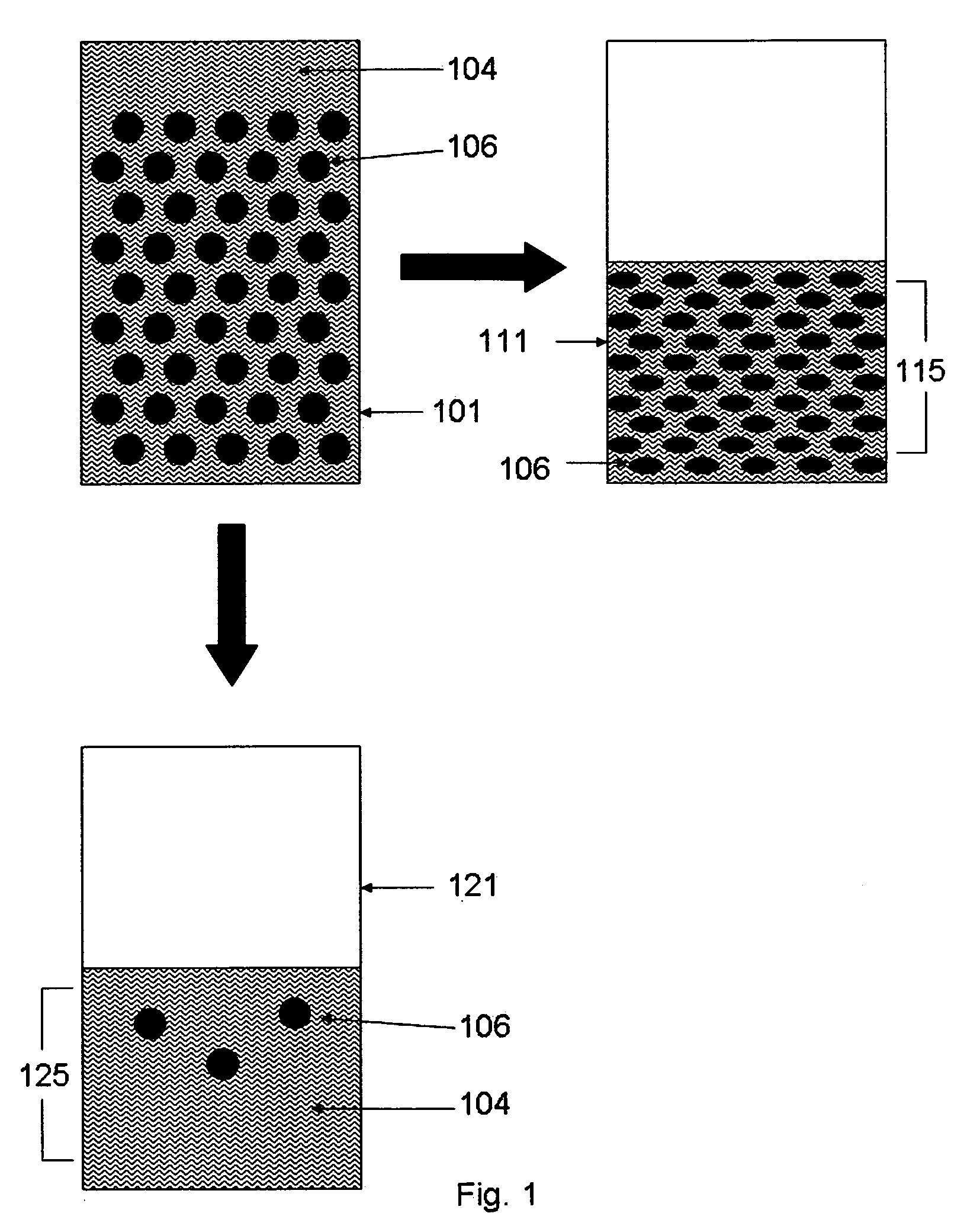Desalination with production of brine fuel
- Summary
- Abstract
- Description
- Claims
- Application Information
AI Technical Summary
Benefits of technology
Problems solved by technology
Method used
Image
Examples
specific embodiments
[0059]The invention described herewith has particular application for a desalination ship or sea-based structure. As noted in the sixth embodiment below, the same method may be applied to a land-based desalination system as well. So as to clarify the substance of the present invention, attention is turned to FIG. 1. FIG. 1 shows a container (101) holding seawater. Seawater is represented by its two main components, namely water (104, waves), and ions (106, all ions, regardless of charge). Note that the components of seawater are not shown to scale and are shown in schematic form for ease of understanding of the invention only. All desalination processes, independent of specific methodology, produce two products, as additionally shown in FIG. 1. In container 111 is shown concentrated brine (115), the “waste” product of desalination. In the container is water with a far-higher concentration of ions (106). This water is undrinkable, useless for agriculture, and if returned to the sea “...
first embodiment
[0063]Attention is now drawn to FIG. 4 which shows a schematic view of a preferred embodiment according to the present invention. Specifically, vessel (430) is at sea (440) off the shore (450) of a land region (460). The vessel (430) is equipped with an intake pipe (470) that allows for intake of seawater into the vessel. In the vessel (430), seawater from the intake pipe (470) is desalinated by any method of desalination including but not limited to reverse osmosis, distillation and evaporation / condensation (not shown). Desalination produces desalinated water and concentrated brine. Desalinated water may be stored on vessel (430) but is generally shipped by a pipeline (480) to a storage facility (490) or municipal water system (not shown) inland from the shore (450). Concentrated brine, in part, is shipped via a separate pipeline (485) to a storage element (495) that can be in the sea or on land as shown in FIG. 4. The amount of concentrated brine shipped by pipeline (485) to stora...
second embodiment
[0065]In FIG. 6, an alternative preferred embodiment of the present invention is presented. Vessel (630) is a fixed structure in the sea (640) and has an inlet pipe (670) for seawater. The vessel (630) can produce both desalinated water for human consumption and concentrated brine for electricity production. As shown, a pipeline (680) takes desalinated water to an on-shore holding tank (685), while a separate pipeline (693) takes a portion of concentrated brine directly to a power plant (697). A runoff pipe (699) removes remaining concentrated brine from the vessel (630) and returns it to the sea (640) at a distance of 1 kilometer from the position of the vessel (630).
PUM
 Login to View More
Login to View More Abstract
Description
Claims
Application Information
 Login to View More
Login to View More - Generate Ideas
- Intellectual Property
- Life Sciences
- Materials
- Tech Scout
- Unparalleled Data Quality
- Higher Quality Content
- 60% Fewer Hallucinations
Browse by: Latest US Patents, China's latest patents, Technical Efficacy Thesaurus, Application Domain, Technology Topic, Popular Technical Reports.
© 2025 PatSnap. All rights reserved.Legal|Privacy policy|Modern Slavery Act Transparency Statement|Sitemap|About US| Contact US: help@patsnap.com



